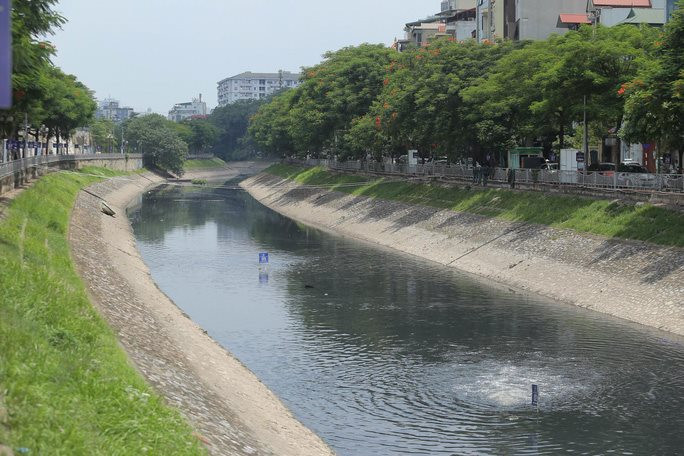Hanoi: Many solutions to protect water resourcesby Nam Phuong Nguyen | 31-08-2022 18:53 |
|---|
|
Sustainable use, anti-exhaustion of water resources; Strict control of sources of discharge and treatment to polluting points¡¦.have been the solutions applied by Hanoi city to protect the capital's water source.  Sustainable use, anti-depletion of water resources Hanoi is implementing the plan on water supply in the capital until 2030, with a vision to 2050. In which, focusing on adjusting the water supply planning includes 5 main areas; Reasonable exploitation of groundwater and surface water sources in the direction of prioritizing the exploitation of surface water sources, gradually reducing the exploitation of underground water sources; To build a water supply network system to transmit water supply along radial axes, ring roads connecting concentrated sources, inter-regional connections to ensure safe water supply; building concentrated surface water plants connecting to inter-regional water supply, raising the total capacity of concentrated surface water plants to about 2,533,000 m3/day by 2025; by 2030 is about 3,075,000 m3/day; by 2050 is about 3,995,000 m3/day. According to statistics, currently 100% of households in urban areas have been supplied with clean water. However, in rural areas, this rate is only about 80%. To fulfill the goal that by 2025, 100% of households will be fully supplied with clean water for daily life, the City People's Committee has increased calling for investors to participate in implementing rural clean water projects in the form of communes. socialization. By the end of June 2021, the city has approved for 23 investors to implement 40 water supply projects, including 11 source development projects, 29 water supply network development projects, expected after the projects are completed. When this project is completed, it will increase the city's capacity to about 2,350,000 m3 /day, ensuring the supply of clean water at the rate of about 94%. At the same time, the city is completing and preparing to apply a common standard on domestic water supply, drinking directly from the tap. At the same time, reduce the rate of water loss to less than 15%. In order to control the quality of clean water, the Department of Natural Resources and Environment is coordinating with the Department of Health, Department of Construction and relevant units to develop and complete regulations on inter-sectoral coordination to perform monitoring tasks. clean water quality in the city, preventing incidents, ensuring security and safety of water sources. Control and thoroughly treat points causing water pollution In which, the city focuses on tasks such as: Collecting and treating domestic wastewater, wastewater from industrial zones/groups, medical wastewater; Treatment of pollution of ponds, lakes and other polluting facilities. For the collection and treatment of urban domestic wastewater and strengthening of water drainage capacity, the City People's Committee assigned functional units to strengthen the management of urban and rural order, social safety and security. environmental sanitation along To Lich and Kim Nguu river routes; dredging, maintaining and maintaining the drainage system (sluice beds, ditches, rivers in the basin in order to minimize pollution; Regularly and effectively transporting domestic wastewater treatment stations. As for industrial zones/clusters, according to statistics, currently 9/9 industrial parks in the city have centralized wastewater treatment stations. However, according to data from Hanoi Department of Natural Resources and Environment, as of June 2021, only 30/70 industrial clusters in the city have a centralized wastewater treatment system. Therefore, the control of wastewater quality in industrial clusters is facing many difficulties. As for medical wastewater, all hospitals in the area have invested in liquid waste treatment systems. However, the liquid waste treatment system in some hospitals has deteriorated and needs to be upgraded to meet the current needs and technology. In addition, the City People's Committee has strengthened pollution treatment, creating landscapes of polluted, degraded and exhausted ponds, lakes, rivers and streams in combination with protecting the architecture, landscape and environment of the Prime Minister. dollar. Currently, the Departments of Construction, Natural Resources & Environment, Transport... are coordinating with People's Committees at all levels to promote environmental sanitation along the To Lich and Kim Nguu river routes; dredging to maintain and maintain the drainage system in the basin in order to minimize pollution; maintaining the water quality of treated lakes¡¦. At the same time, strictly handle establishments polluting water sources; resolutely relocate establishments causing serious pollution, which are not in accordance with the planning, out of the inner city¡¦. |